One of the basic differences between a service panel and a sub-panel is that at the sub-panel, the neutral bus bar must be electrically isolated from the grounding bus bar. This is typically achieved by first attaching to the metal cabinet a mounting plate of plastic or some other non-conductive material to which is the neutral bus bar is then attached.
The neutral and grounding bus bars should be electrically connected in the service panel only!
When looking into a sub-panel, look to be sure no bonding jumper is installed. A bonding jumper is a conductive device connecting the neutral bus bar with the grounding bus bar. The bonding jumper may be a green screw, a metal strap, the back of the metal cabinet, a conductor, or a metal tie-bar.
What you shouldn't see in a sub-panel
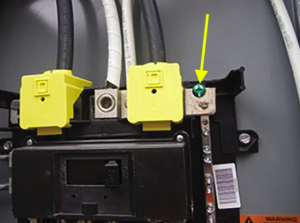 Green bonding screw
Green bonding screw 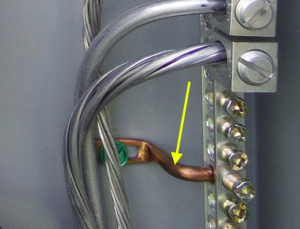 Copper bonding strap
Copper bonding strap
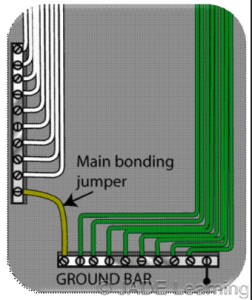 Bonding conductor
Bonding conductor 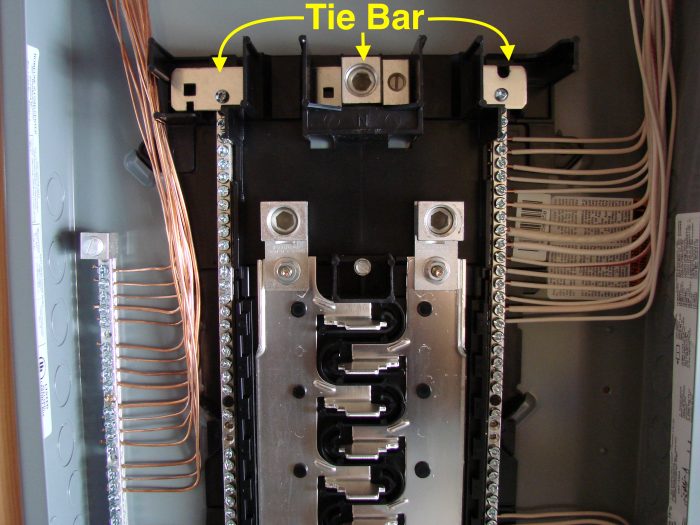 Tie Bar (1 piece)
Tie Bar (1 piece)
Auxiliary Grounding Bus Bar
In the Tie Bar photo above you can see that the tie bar connects two bus bars, while a third grounding bus bar has been installed. This allows the panel to be used as either a service panel or as a sub-panel. As long as the neutral bus bars are electrically isolated from the grounding bus bar, this is acceptable.
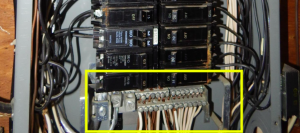
In a sub-panel, grounds and neutrals on the same bus bar is a defective condition.
A bonding jumper may be a flexible metal strap or some other device that connects the two bus bars. Look carefully!
The degree to which a bonded neutral in a sub-panel is dangerous depends on who you ask. It's recommended that you not state the degree to which a bonded neutral is serious unless you feel that you can explain your reasoning clearly and logically in court. It's best just to state that it is improper, recommend correction by a qualified electrical contractor, and move on.
